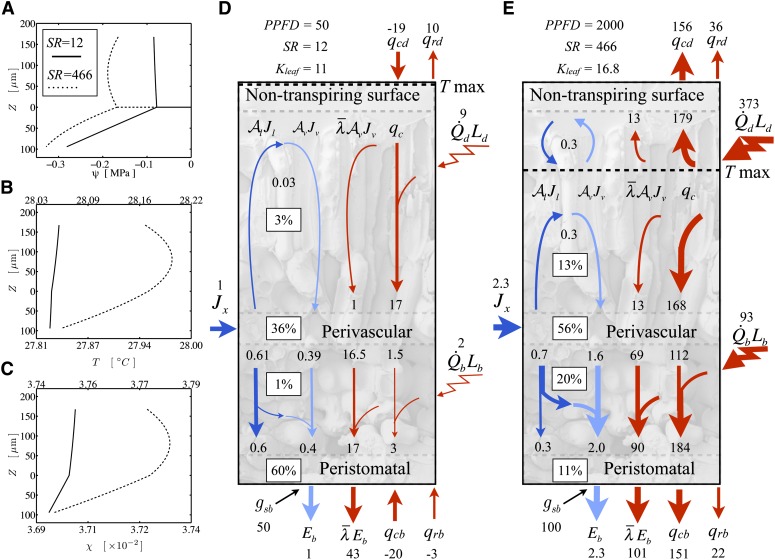Figure 5.
Distribution of evaporation for a simulated low-light (PPFD = 50 μmol m−2 s−1) evaporative flux experiment on an oak-like leaf but with an air fraction of 0.34. For A to C, solid lines are for the low load (SR = 12 W m−2) and dotted lines are for the high load (SR = 466), with the scale on the top x axis in B and C. A, Water potential profile through the leaf thickness (upper = adaxial, lower = abaxial) with the vascular plane at z = 0. The horizontal line is the potential drop between the stem and the vascular plane. B, Temperature profile. C, Mole fraction profile. D and E, Fluxes of energy (red; W m−2) and molecules (dark blue for liquid and light blue for vapor; mmol m−2 s−1) and the percentage of the total transpirational phase change occurring in different regions of a leaf under two different energy regimes, driven by low (D) and high (E) light levels (μmol m−2 s−1). The transition from a dominant surface load of sensible heat at low light to a dominant short-wave load at high light results in a large change in Kleaf (mmol m−2 MPa−1 s−1).

